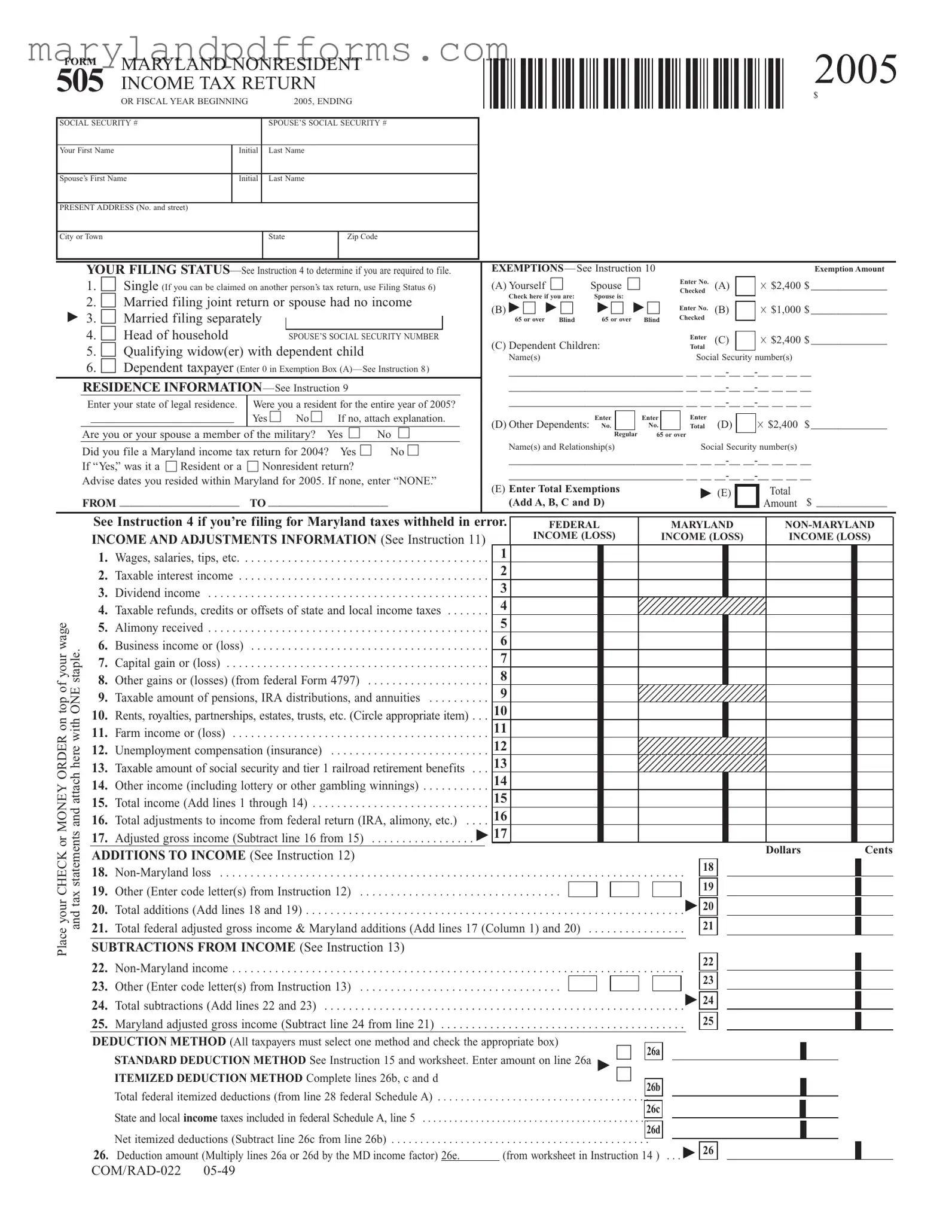The Maryland 505 form is a tax return specifically for nonresidents who earned income in Maryland during the tax year. It allows individuals to report their income, claim exemptions, and calculate their tax liability for the state of Maryland.
This form is intended for nonresidents who have earned income from Maryland sources. If you lived in Maryland for part of the year but were not a resident for the entire year, you should file this form. It's important to check your filing status to determine your requirements.
You will need the following information:
-
Your Social Security number and that of your spouse, if applicable.
-
Your present address, including city, state, and zip code.
-
Details about your income, including wages, interest, and any other sources.
-
Information about your exemptions and filing status.
How do I determine my filing status?
Your filing status can be determined based on your marital status and whether you can be claimed as a dependent. The form provides specific options to select from, such as Single, Married Filing Jointly, or Head of Household. Review the instructions carefully to choose the correct status.
What exemptions can I claim?
You may claim exemptions for yourself, your spouse, and any dependents. Each exemption has a specific dollar amount that can reduce your taxable income. Ensure you provide accurate information about each person you claim as an exemption.
What if I made no income in Maryland?
If you did not earn any income in Maryland, you may not need to file the Maryland 505 form. However, if you have had Maryland taxes withheld from your income, you might want to file to claim a refund. Always check the specific instructions to confirm your obligations.
You can submit the form either by mail or electronically. If mailing, send it to the Comptroller of Maryland, Revenue Administration Division. Make sure to include any required documents, such as W-2 forms, and ensure that your information is accurate to avoid delays.
What happens if I miss the filing deadline?
Missing the filing deadline can lead to penalties and interest on any taxes owed. If you anticipate being late, it’s best to file for an extension. However, you should still pay any estimated taxes to avoid further penalties.
If you have questions about completing the Maryland 505 form, you can contact the Comptroller of Maryland's office for assistance. Additionally, many tax professionals can provide guidance on the filing process and help ensure your return is accurate.
